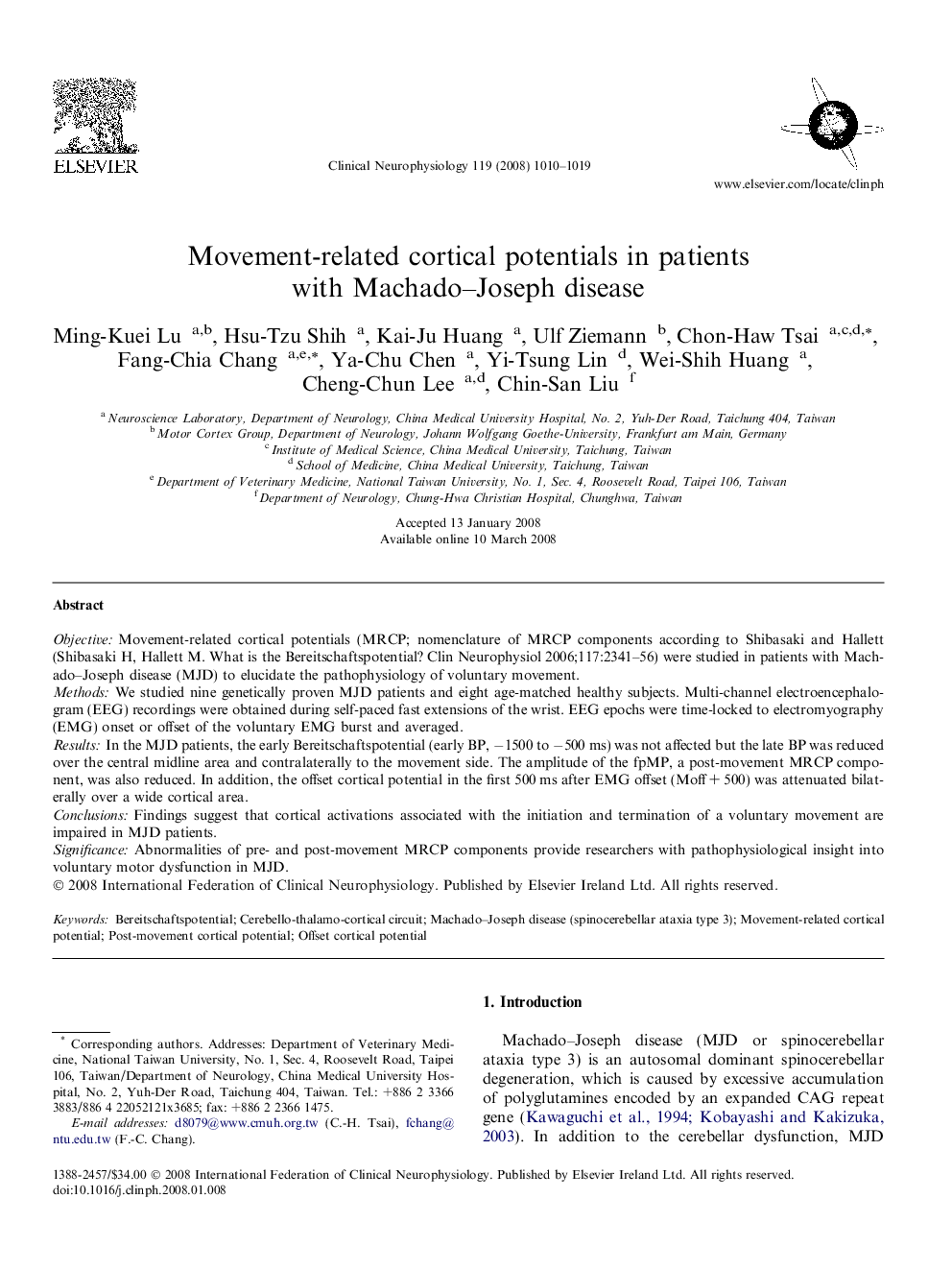| Article ID | Journal | Published Year | Pages | File Type |
|---|---|---|---|---|
| 3047588 | Clinical Neurophysiology | 2008 | 10 Pages |
ObjectiveMovement-related cortical potentials (MRCP; nomenclature of MRCP components according to Shibasaki and Hallett (Shibasaki H, Hallett M. What is the Bereitschaftspotential? Clin Neurophysiol 2006;117:2341–56) were studied in patients with Machado–Joseph disease (MJD) to elucidate the pathophysiology of voluntary movement.MethodsWe studied nine genetically proven MJD patients and eight age-matched healthy subjects. Multi-channel electroencephalogram (EEG) recordings were obtained during self-paced fast extensions of the wrist. EEG epochs were time-locked to electromyography (EMG) onset or offset of the voluntary EMG burst and averaged.ResultsIn the MJD patients, the early Bereitschaftspotential (early BP, −1500 to −500 ms) was not affected but the late BP was reduced over the central midline area and contralaterally to the movement side. The amplitude of the fpMP, a post-movement MRCP component, was also reduced. In addition, the offset cortical potential in the first 500 ms after EMG offset (Moff + 500) was attenuated bilaterally over a wide cortical area.ConclusionsFindings suggest that cortical activations associated with the initiation and termination of a voluntary movement are impaired in MJD patients.SignificanceAbnormalities of pre- and post-movement MRCP components provide researchers with pathophysiological insight into voluntary motor dysfunction in MJD.
